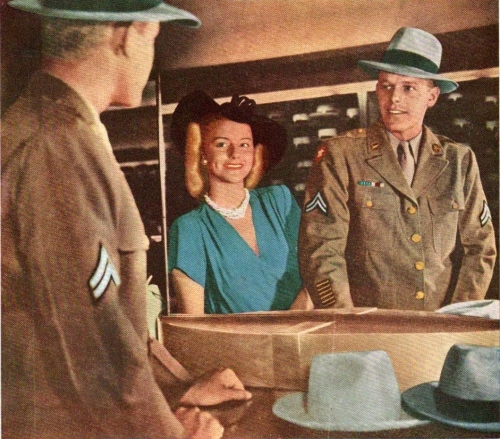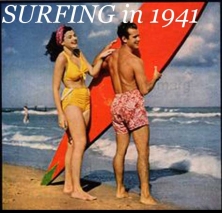Fashion - 1940s Men's Fashions

In light of the fact that all Army personnel would be issued $300 with their honorable discharge papers, the fashion editor for Esquire Magazine, Henry Jackson, decided to moonlight at Collier's in order to provide some solid fashion-tips on how best to spend that hard-earned cash. The attached 1945 article was intended to serve as a suit-buying-guide for all those young men who were in the throes of trading in their military uniforms for civilian attire.
The one kind of wool that is not discussed in this article is "worsted": this was the wool that was specifically reserved for the uniforms of the U.S. military (enough to outfit 12 million souls) and there wasn't a single thread of it that could be purchased on the civilian market. Fashion writer Henry Jackson had a few words to say concerning the importance of Glen Plaid in men's fashions during the Fall of 1940. This article appeared in an issue Click Magazine that was deliberately edited to aid those young men who had been wearing uniforms for the past few years and, subsequently, had no knowledge whatever of tailoring or of fabric that was not government issued. It consists of a handy guide for the aspiring dandy showing just how a gentleman's suit should fit if it is to be properly worn.
Read an article about the history of Brooks Brothers One evening in 1947, Henry L. Jackson, co-founder of Esquire Magazine, realized that his magazine alone was not sufficient enough in circulation for passing the word along to his fellows that the rules for men's evening wear were rapidly being rewritten; knowing full-well that Collier's was one of the preeminent American magazines of its day, he no-doubt must have pleaded the urgency of his case to their editors and, in so doing, saved the collective faces of the homo Americanus once more! We're delighted that he did so, because now you will have a more thorough understanding as to how you might have dressed had you lived in post-war America.

A chart produced by the editors of MEN'S WEAR MAGAZINE indicating the best-selling colored wool used in men's suits spanning the years 1935 through 1950.
The pointy-headed soothsayers who attempt to predict which colors men would buy were very surprised to find that in the aftermath of World War II, American men were quite eager to buy browns and khaki-colored suiting after all. |
MORE ARTICLES >>> PAGE: * 1 * 2 * |
|